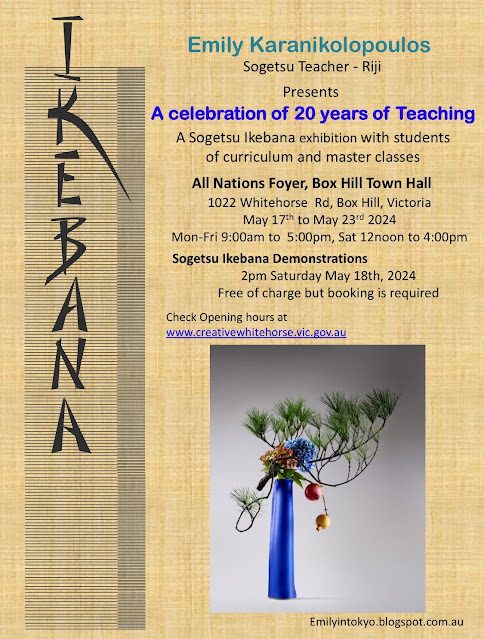Hello all,
It's the time of year when the agapanthus have to be dead headed, a job that I can't do in one go but over a few weeks. Needless to say, I'm always tempted to use some of the cuttings for ikebana. One example is the photo, above. This arrangement could also address the theme 'With one kind of Material Only', as does the one below.
I love the sculptural appearance of agave, however, it has taken me decades to learn how to use it successfully. Firstly, I had to accept the fact that I cannot manipulate the large, strong pieces but have to design my arrangement around the shape that already exists. Secondly, they are very heavy and require a heavy container to support them. Thirdly, a kenzan cannot be used successfully because of its soft flesh. And lets not even mention the thorns along each side.
I was working on a project, which I will reveal to you in due course, which required a couple of agave pieces with a very specific shape. I had cut about 10 pieces before I got the two I needed. So, I was left with eight that I, certainly, could not throw away. Hence the arrangement, above, and the three below.
A little way down my street the council had trimmed some oak trees and the beautiful cuttings with their autumnal foliage were lying on the ground. This was not an opportunity to be missed. Two arrangements came from that lucky find.
 |
| Apologies for the poor quality of this photo |
 |
| Oak branch, Japanese anemones and persimmons |
It's always a source of joy for me when my Kamo-hon-ami camellia begins flowering. I cut the first flower and teamed it with two pomegranates from my tree that only produced three fruit this year.
Bye for now,























































